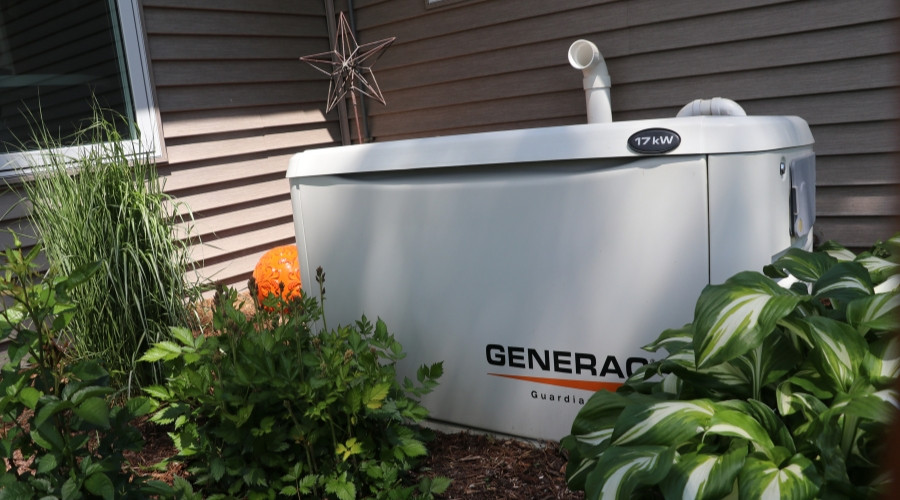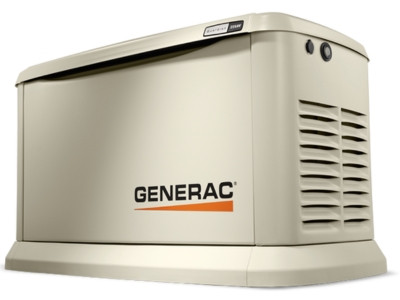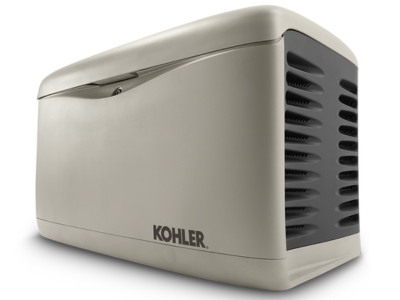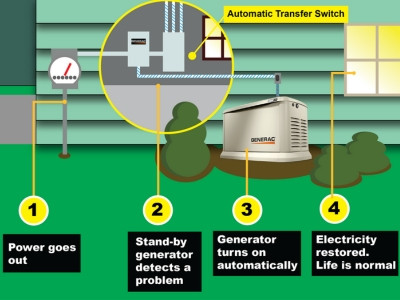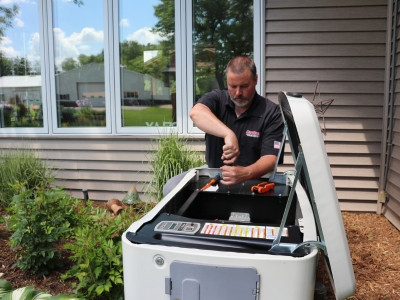Introduction to Generators
If you would love a great alternative that will be ever-ready to kick in after a power outage, then a whole home generator is the appliance to possess. Power outages are serious disruptions to every aspect of our lives, so it will always be great to know you have an alternative that ensures your work and fun are not compromised.
There are a couple of things you should bear in mind before getting a stand-alone whole-home generator, and this article discusses them in detail.
What is a Stand-Alone Whole Home Generator?
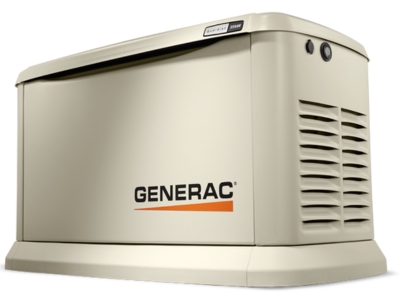 A stand-alone whole-home generator may also be called a standby generator. This generator connects to your primary electrical system and an alternative power source (propane or natural gas) so that it automatically kicks in during a power outage and supplies your home with electricity. This generator type has been referred to as the “most powerful generator that you can buy” because it can power your entire home, including all your appliances.
A stand-alone whole-home generator may also be called a standby generator. This generator connects to your primary electrical system and an alternative power source (propane or natural gas) so that it automatically kicks in during a power outage and supplies your home with electricity. This generator type has been referred to as the “most powerful generator that you can buy” because it can power your entire home, including all your appliances.
One of the biggest advantages of whole home generators is that when there is a power outage, they kick in instantly without you having to do anything.
What Different Types of Generators Are Available?
There are varying types of whole home generators based on their size, fuel type, cooling system, etc. Here are the options available to you:
1. Fuel-Type
You can generally choose between three fuel types, which include liquid propane, natural gas, and diesel.
Liquid Propane (LP) Whole Home Generators
Liquid propane is a byproduct of petroleum and natural gas. When a whole home generator is run by liquid propane, the propane is usually stored in underground tanks installed in the home. The generator is then fed the fuel it needs from the tank. Some of the major benefits of using a whole-home generator that uses liquid propane include:
- It is one of the most affordable fuel sources for generators.
- It is less contaminating to the environment.
- Whole home generators that run on liquid propane generally generate less noise.
Natural Gas (NG) Whole Home Generators
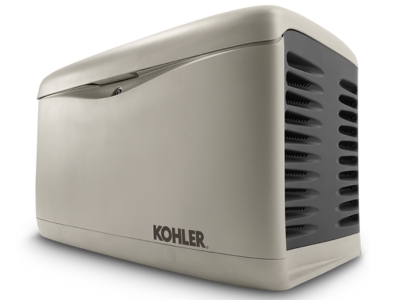 Natural gas is a mix of methane and other gases. An underground pipeline with natural gas powers your generator and is regulated and metered by the appropriate authorities. One of the major benefits of this fuel type is that there is no need to refuel. Other important benefits include the following:
Natural gas is a mix of methane and other gases. An underground pipeline with natural gas powers your generator and is regulated and metered by the appropriate authorities. One of the major benefits of this fuel type is that there is no need to refuel. Other important benefits include the following:
- It usually requires lesser installation work because the homeowners already have gas lines beneath them.
- Lower costs of maintenance.
Diesel Whole Home Generators
This may be the last option for residential buildings, but diesel does have some advantages as a fuel source, including the fact that it is high in energy. To use diesel with your stand-alone generator, you will need to get an external tank to hold the fuel. If you want to have more than a day's supply of fuel, this is especially important.
Notably, gasoline is generally a bad idea as a whole-house generator fuel source. It is very volatile and deteriorates rapidly.
2. Size
There are varying sizes of whole-home generators, and their sizes usually determine their maximum power. Therefore, the larger the size of the generator, the more power it can provide. Generally, generators are sized by kilowatts (KW), and we have whole-home generators of about 35kw and others of 7.5kw. In the U.S., the minimum kilowatts of most whole home generators is between 8.5kw and 10kw. This is because the minimum electrical load of most homes is 5-7kw. Whenever you see measurements in watts, note that 1000 watts equal 1 kilowatt.
3. Cooling System
When it comes to the cooling system of a whole-home generator, you have two options: Liquid Cooled or Air Cooled whole-home generators.
Liquid-Cooled Whole Home Generators
A liquid-cooled generator supplies a coolant through the engine that absorbs heat. This coolant then moves back through the radiator, cools down, and then gets recycled again. Some of the benefits of this type of cooling system include the following:
- There is no fear of overheating in hot climates.
- They usually operate more efficiently with no risks of shutting down
Air-Cooled Whole Home Generators
Here, the generator uses the surrounding air to cool down the engine. This could involve a fan that blows air across the engine or the surrounding air absorbing the heat from the engine.
Liquid-cooled generators are preferred because they can run for longer periods without overheating and shutting down, whereas air-cooled generators may overheat and shut down.
How Do I Know What Size of Generator I Need for the Size of My Home?
To determine the appropriate size of the whole home generator that will power your home, you will need to determine the estimated electrical load for your home. You should be looking for a whole home generator with a size beyond your estimated electrical load. Some of the ways to find out the power requirements of your home include:
- Contact a team of experts to measure the electrical load for your home and pick a stand-alone whole-home generator that will adequately serve your home.
- You could also calculate the wattage of your appliances. You should multiply the total watts from your appliances by about 2.0 to create a safety margin.
- Contact your power company or use your electric bill.
Is a Portable Generator Going to Be Enough for Me, Or Do I Need a Stand-alone Generator?
The answer to this completely depends on your needs and your preferences.
A portable generator is generally smaller in size than a stand-alone generator and may only be used to run small appliances in the event of a power outage. One thing to consider is what exactly it is you’re trying to power. Most stand-alone generators don't produce what is considered “clean” power. What this refers to is the amount of Total Harmonic Distortion (THD) produced. High THD, which is what most portable generators produce, can damage sensitive electronics like computers, smart TVs, phones, and tablets. Therefore they are not what you want, powering your home during a power outage. However, they are mobile and can be moved to whatever location needs power. Thus, if you don't need to power your entire home, and mobility is important to you, then the portable generator may be the best choice for you. It is also important to note that a portable generator is cheaper to buy and install.
On the other hand, if you want your entire home to be fully powered in the event of an outage, then the stand-alone generator is for you. In addition, it turns on automatically, so there is no need to switch it on like with a portable generator.
Therefore, a portable generator will not be enough for you if you intend to power your whole home during a power outage and you love the convenience of having an alternative power source that can turn itself on automatically.
What is an Automatic Transfer, and How Does it Work?
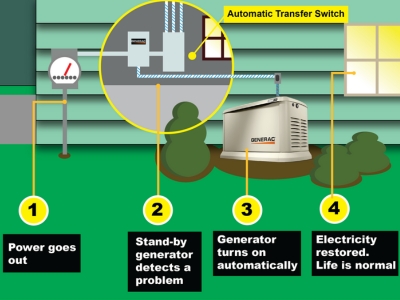 An automatic transfer involves switching power from the main supply to an alternative supply and back to the main supply when necessary. An automatic transfer is powered by an automatic transfer switch, which may work manually or automatically.
An automatic transfer involves switching power from the main supply to an alternative supply and back to the main supply when necessary. An automatic transfer is powered by an automatic transfer switch, which may work manually or automatically.
How Does an Automatic Transfer Switch Work?
Typically, a transfer sequence follows the following steps:
- There is a failure of the primary power source.
- The transfer switch shifts the electrical load to the generator or alternative power source when power from this source is stable.
- When the primary source receives power again, the switch shifts the electrical load back to the power source.
Modes of Operation of an Automatic Transfer Switch
Manual Mode
Here, the transfer is powered manually by moving a handle, pushing a button, or flipping a switch by a human operator.
Automatic Mode
Automatic switch transfer is found in stand-alone generators. Here, the transfer is triggered automatically when the controller picks up power from the primary source. This operation is usually done by a motor or electric solenoid.
Do I Need to Do Anything Special to My Home to Install a Whole Home Generator?
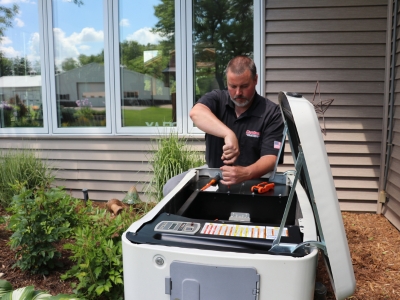 You don't need anything special to install a whole home generator. Indeed, once you get the right generator and have decided on the fuel type, installation may begin. In general, you should have a professional do the job for you. However, if you plan to do it yourself, here are some things you need to know:
You don't need anything special to install a whole home generator. Indeed, once you get the right generator and have decided on the fuel type, installation may begin. In general, you should have a professional do the job for you. However, if you plan to do it yourself, here are some things you need to know:
- You may need a permit to install a whole-house generator, depending on your location. There may also be a need for inspections before installation. You must reach out to your HOA representatives to confirm these things before you begin the installation.
- Pay attention to the guidelines that come with the generator on the proximity of the generator to your home.
- You have to pay careful attention to the plumbing connections, such as valves. It is particularly important where liquid propane and natural gas will be used as fuel.
Cardinal Company: Best HVAC Company in Sun Prairie, WI
Should you decide to get the help of professionals in installing your whole-home generator, then the team of expert technicians at Cardinal Heating & Air Conditioning are trained and ready to serve you.
Cardinal Heating and Air Conditioning have proudly served the Sun Prairie, WI, area for over 38 years. They offer a full range of services, including whole-home generator installation. Their customers can expect to receive honest advice, quality workmanship, and fast response time.

